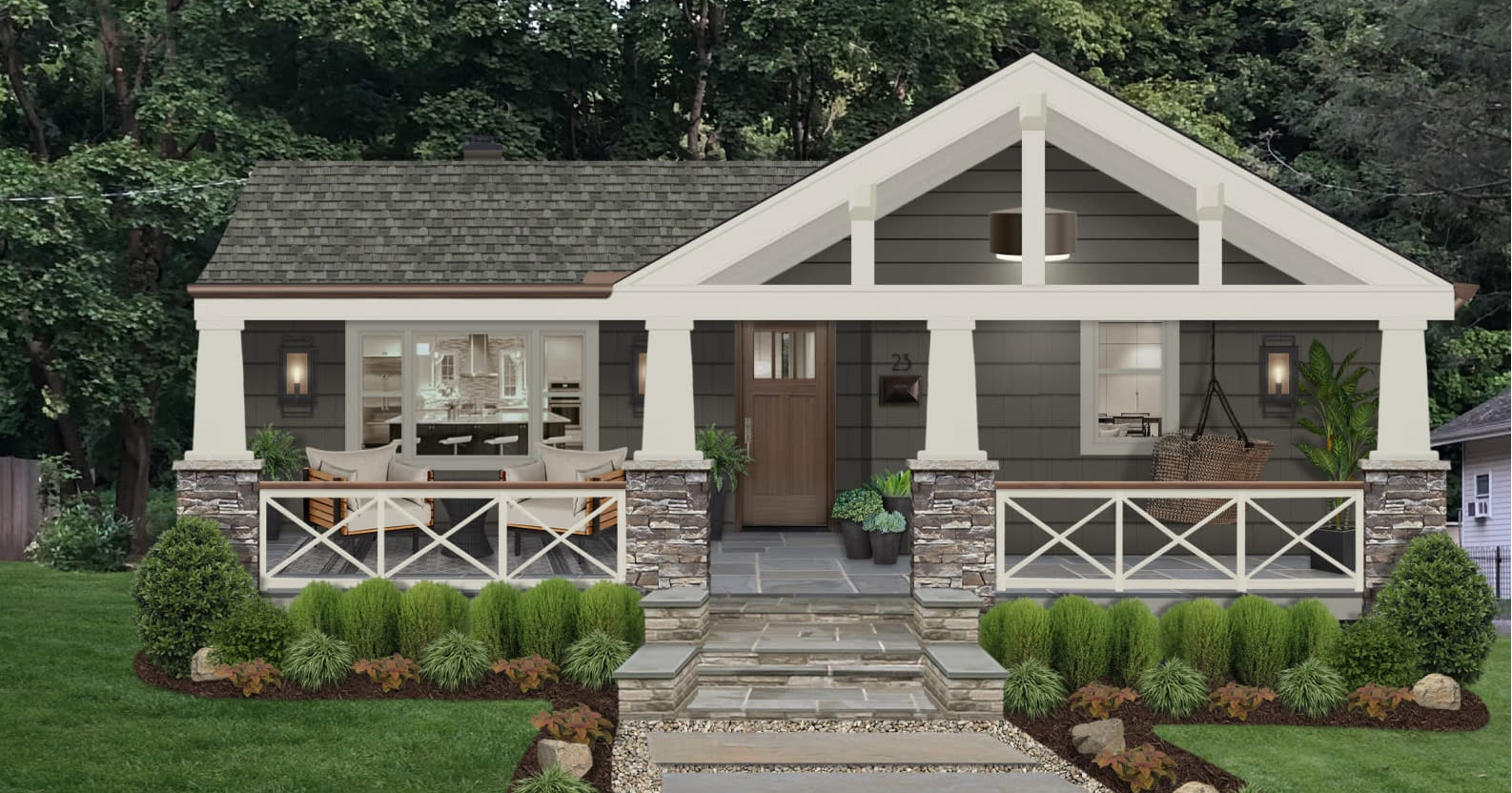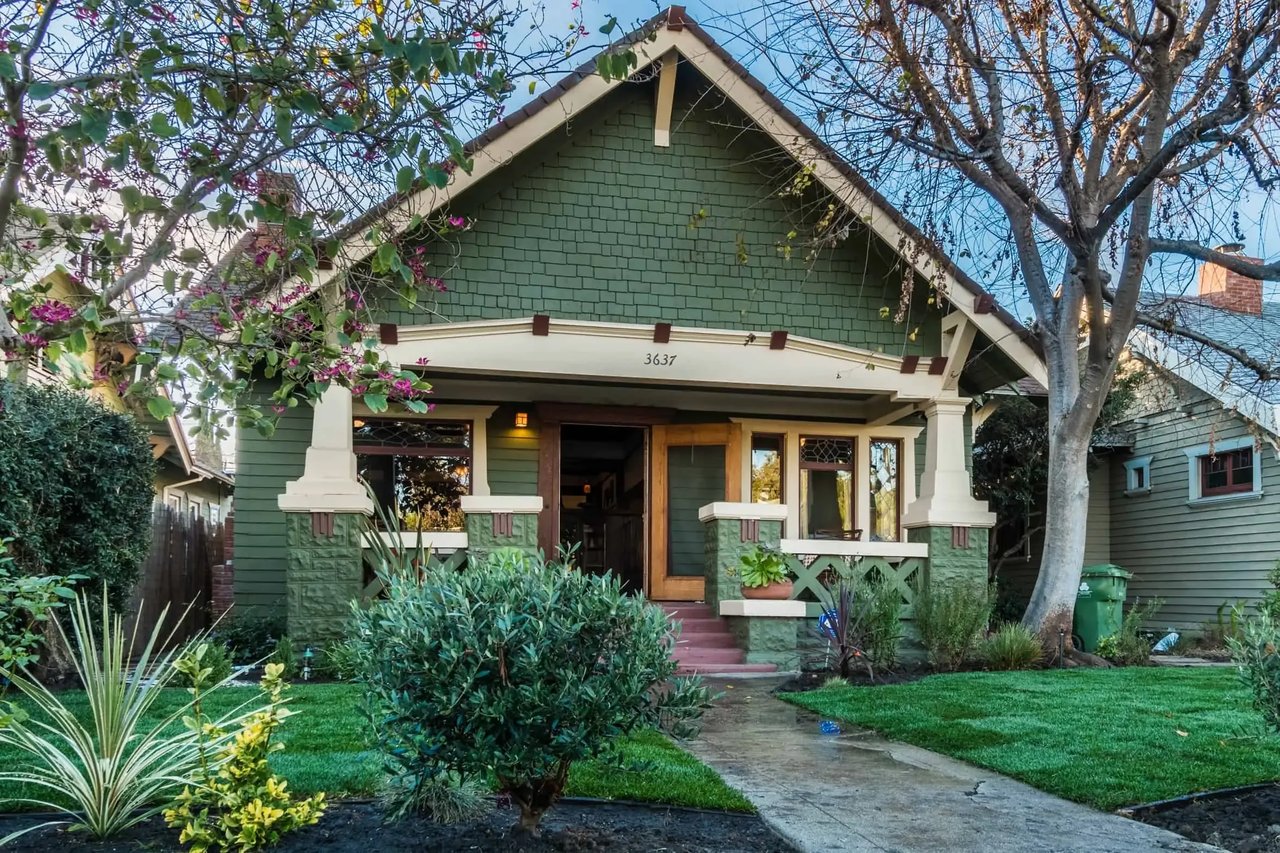The Benefits and Drawbacks of Living in a craftsman style house
Wiki Article
The Role of Arts & & Crafts Architects in Elevating Architectural Solutions in Residential Style
Arts and Crafts architects significantly affect domestic design via their commitment to craftsmanship and sustainability. They prioritize handcrafted information and all-natural products, which boost both aesthetic appeals and neighborhood identity. By involving clients in the design process, these architects produce special living areas that resonate with personal preferences. This technique questions about the future trajectory of residential architecture and its prospective influence on community characteristics. craftsman style house. What exists ahead for this timeless layout approach?
The Principles of Arts and Crafts Architecture
The essence of Arts and Crafts architecture hinges on its dedication to craftsmanship and simplicity. This architectural motion emerged in the late 19th century as a feedback to automation, emphasizing the value of handcrafted details and all-natural products. The concepts of Arts and Crafts architecture focus on capability and consistency with the setting. Frameworks typically feature low-pitched roofing systems, large eaves, and subjected rafters, advertising a feeling of unity with nature.Artisans played a substantial duty in this design, usually incorporating decorative elements like stained glass, ceramic tiles, and woodwork, which reflect neighborhood workmanship. The color scheme often tends to be earthy and subdued, permitting structures to blend flawlessly right into their surroundings. Furthermore, the layout encourages open layout and public areas, promoting a sense of togetherness. On the whole, the principles of Arts and Crafts architecture commemorate the appeal of simplicity and the relevance of human connection to both nature and neighborhood.

Lasting Practices in Residential Layout
While the demand for ecologically responsible living remains to expand, sustainable practices in residential style have gained substantial grip among architects and homeowners alike. Architects are significantly integrating energy-efficient innovations and sustainable products into their designs, intending to minimize carbon footprints and boost power conservation. Approaches such as passive solar layout, green roofings, and rainwater harvesting systems are coming to be common components of modern-day household architecture.Furthermore, the option of locally sourced materials minimizes transport discharges and supports local economic climates. Focus on natural light and air flow not just enhances interior air top quality but also lowers dependence on synthetic illumination and climate control systems. These lasting techniques show a dedication to protecting the setting while supplying homeowners with comfortable, efficient home. As awareness of environmental problems expands, the integration of sustainability in residential layout is poised to become a defining quality of contemporary architecture, assisted by the concepts developed by Arts and Crafts architects.
Modification and Personalization in Home Design
Modification and personalization in home style have become essential trends in action to the expanding need for one-of-a-kind living settings that mirror specific preferences and way of lives. House owners progressively seek to tailor spaces that reverberate with their individual identities, leading to an extra meaningful connection with their space. craftsman style house. This activity motivates architects to involve customers in the layout procedure, promoting partnership that guarantees the last end result symbolizes the property owner's visionElements such as bespoke formats, personalized products, and tailored coatings enable a varied variety of expressions in domestic design. Arts and find Crafts architects play a crucial function in this evolution, stressing craftsmanship and quality. Their concentrate on integrating his response imaginative aspects with functionality warranties that each home is not only visually pleasing but likewise distinctively matched to the occupants' needs. Subsequently, this emphasis on modification improves the overall property experience, creating rooms that are both personal and long-lasting.

The Impact of Arts and Crafts Architects on Neighborhood Aesthetic Appeals
As communities evolve, the influence of Arts and Crafts architects significantly forms their aesthetic landscape. By emphasizing handmade details, all-natural materials, and traditional building and construction methods, these architects develop homes that resonate with their environments. Their styles often include local vegetations, structures, and shades, fostering a feeling of harmony in between built atmospheres and nature.The Arts and Crafts motion advertises neighborhood identification through architectural connection. By encouraging house owners to adopt similar layout principles, areas create a cohesive personality that boosts aesthetic appeal. This building harmony not only improves the visual experience but also infuses a sense of satisfaction amongst homeowners.
In addition, the focus on sustainability and craftsmanship in Arts and Crafts architecture straightens with contemporary worths, making these styles pertinent in contemporary settings. Eventually, Arts and Crafts architects add considerably to the overall elegance and cultural honesty of communities, leaving a long lasting effect on their aesthetic tradition.

Future Trends in Arts and Crafts Architecture
With an increasing focus on sustainability and personalization, future trends in Arts and Crafts architecture are positioned to mix standard craftsmanship with modern advancement - craftsman style house. Architects are likely to focus on eco-friendly materials, making use of reclaimed wood and natural stone to enhance the sustainability of residential layouts. The assimilation of clever home innovation will certainly become typical, permitting for individualized living experiences without jeopardizing aesthetic honestyThe rebirth of artisanal techniques will certainly promote a renewed recognition for handcrafted components, such as bespoke cabinets and personalized ceramic tile job. Future styles may likewise reflect a focus on community-oriented spaces, motivating interaction and link among citizens. Outdoor living areas will certainly acquire prestige, perfectly incorporating nature into the home atmosphere. As Arts and Crafts architecture evolves, it will proceed to recognize its roots while adjusting to modern requirements, producing unified spaces that mirror specific values and way of lives.
Frequently Asked Concerns
What Influenced the Arts and Crafts Activity in Architecture?
The Arts and Crafts movement in architecture was inspired here by a response against industrialization, highlighting handcrafted quality, all-natural materials, and a return to traditional workmanship, aiming to produce unified, useful spaces that celebrated creativity and originality.Just how Do Arts and Crafts Architects Collaborate With Clients?
Arts and crafts architects work together with customers with open discussion, focusing on personal needs and aesthetic appeals. They stress workmanship and sustainability, cultivating a partnership that integrates the client's vision with the architect's know-how in layout and products.What Products Are Commonly Used in Arts and Crafts Homes?
Common materials in Arts and Crafts homes include natural wood, stone, and brick, emphasizing craftsmanship and organic aesthetic appeals. These aspects produce a warm, inviting atmosphere, reflecting the movement's dedication to quality and simplicity in layout.Just how Do Arts and Crafts Layouts Boost Indoor Living Areas?
Arts and Crafts layouts boost interior living areas by promoting natural light, open layout, and handcrafted information. These aspects promote a warm, inviting ambience, urging a link between homeowners and their environments via thoughtful, functional visual appeals.What Are Some Famous Examples of Arts and Crafts Architecture?
Famous instances of Arts and Crafts architecture consist of the Gamble House, Greene and Greene's work of art in California, and the Robie House by Frank Lloyd Wright. These frameworks display handcrafted details and consistency with nature, defining the movement's essence.Report this wiki page